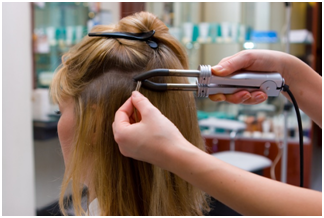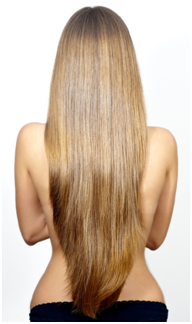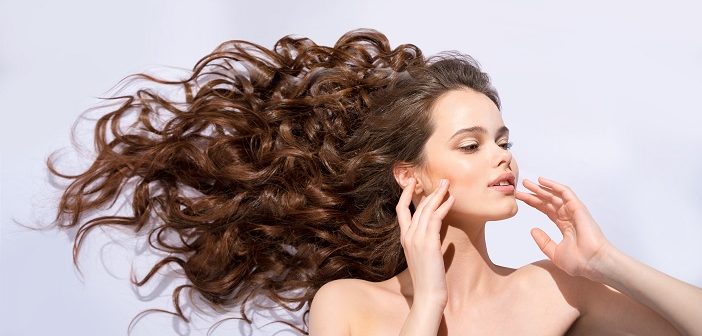 Who doesn’t often wish that their hair were longer and fuller, to have a mane worthy of supermodel status? Some are born with enviable hair but many others are not, stuck with fine, thin locks that even the best volumizing hair products can’t always help.
Who doesn’t often wish that their hair were longer and fuller, to have a mane worthy of supermodel status? Some are born with enviable hair but many others are not, stuck with fine, thin locks that even the best volumizing hair products can’t always help.
The good news is that hair extensions can often grant the wishes of those with fine or short hair, and the technology behind them is better than ever. There are several different, cutting-edge techniques that can work for many types of hair and as a bonus these new types of extensions, with the proper care, can last much longer than their older counterparts.
However, it’s not necessarily a good idea to rush down to your local salon and simply ask for extensions. There are several factors that go into ensuring that you get the right type of extensions and that the stylist knows what they’re doing. So if you’re considering hair extensions these are some things you should know before you take the plunge.
Explore the Various Types of Extensions
Hair extensions now come in many more types and styles than ever before. However, they all tend to fall into two groups: permanent and clip-in. Your stylist will be able to tell you which is best based on your hair type.
Permanent extensions are generally available in four styles.
- Bonded extensions. These types of extensions use hot glue to bond the extensions to your natural hair. There is also another method called cold fusion that uses a keratin polymer to bond the extensions.
- Sew-in extensions. Sew-in extensions require tight braiding of your own hair to your scalp. The extensions are then sewn into the braids.
- Tape-in extensions. These extensions are taped to your scalp using a specially formulated double-sided tape.
- Coil extensions. This method uses small metal rings to attach strands of extensions to your own hair at the root.
Clip-in extensions are self-explanatory. The extensions are simply clipped to your own hair near the root and are removed just as easily. One of the only drawbacks to these extensions is correct color matching, but your stylist can assist with this.
How Long Do They Last?
When you make the choice to get hair extensions, one of your main concerns should be how long they’ll last. The shelf life of extensions varies widely between the various types so this is an important question to ask your stylist.
In general, bonded extensions can last from three to five months. Sewn in extensions generally last from six to eight weeks. Tape-in extensions also last for six to eight weeks. Clip-in extensions have the longest shelf life. If properly cared for they can last up to two years. This makes clip-ins one of the most popular types of extensions due to the fact that they outlast the others.
How Much Do Extensions Cost?
One of the first things people ask stylists is how much hair extensions cost. It’s not a simple answer as there are many factors that go into the pricing. Synthetic hair is cheaper than natural human hair but not as easy to style and care for. Permanent extensions are more expensive than clip-ins due to the time and labor involved.
Generally speaking you can expect to pay as little as $30 for synthetic clip-in extension and up to $300 for natural hair clip-ins. Permanent extensions are more expensive and the price varies according to the application method. Heat bonded extensions can be as much as $400 while the cold bonded version can be as much as $1,500. Coil extensions are also pricey at about $1,000.
With extensions you really do get what you pay for so be sure your stylist is trained in your chosen extension method and that you get the highest quality hair you can afford.
 Which Method Is Right for Me?
Which Method Is Right for Me?
Choosing the right type of extensions and application method is very important. If done incorrectly it can damage your natural hair and even lead to hair loss. Your stylist will be able to tell you which method is right for you or that you shouldn’t have extensions at all.
People with fine hair should consider the coil method as it’s less damaging and doesn’t add as much weight as other methods do. Clip-ins are also great for people with fine hair, but again you need to be sure they’re not too heavy and cause strain on your natural hair.
People with thicker, stronger hair have more options. Virtually any of the methods listed will work for you so talk to your stylist to help determine your choice.
Whether you simply want to add more volume and length with clip-ins for special occasions or you’re invested in the time and maintenance of permanent extensions, be sure to ask all the questions first. Once you’ve decided book that appointment and enjoy you luscious new locks.





I was thinking about doing it this month. Now I’m gonna do a bigger research!
Thanks for the advices!